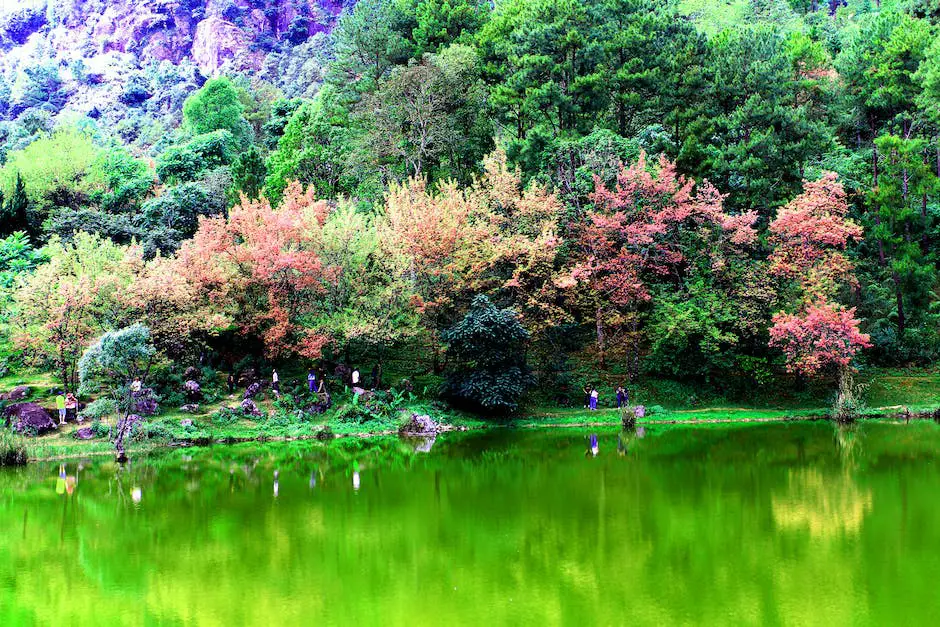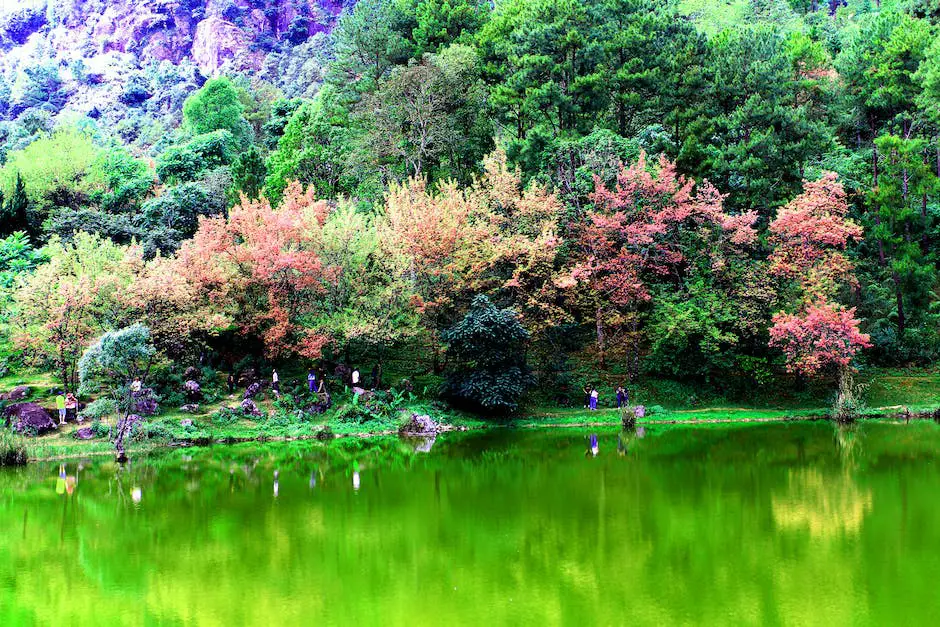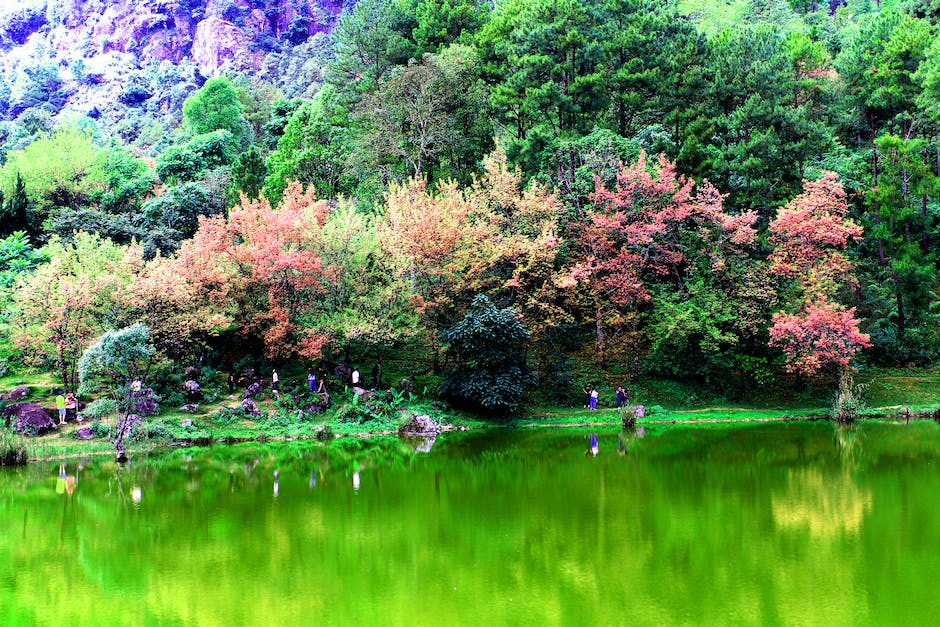Although they are commonly known as Japanese maple trees, Acer palmatum trees are actually native to China and Korea. These beautiful trees are popular in landscaping due to their varied leaf shapes and colors, as well as their relatively small size. One common question about Japanese maple trees is whether or not they can grow in shade. The answer is yes, Japanese maple trees can grow in shade, but they may not thrive as much as they would in full sun.
Yes, Japanese maple trees can grow in shade, but they prefer full sun. They will grow at a slower rate in shade, and their leaves may be smaller and more yellow than those grown in full sun.
Which Japanese maples do well in shade?
Crimson Queen is an excellent choice for a red-leaved, weeping tree. It grows to a large shrub ten feet tall and about the same across. This tree is known for holding its red leaf-color through the summer better than any other form, even in shade. It is definitely the best choice for those locations.
Sun and shadeBloodgood Japanese maple trees prefer to grow in partial shade, or about four hours of direct, unfiltered sunlight per day. They can also grow in full sun, which is six hours or greater. However, shadier planting sites will lead to more robust and vivid foliage colors.
Can maple trees survive in shade
Maples are shade trees that grow best in full sunlight, but can also grow in a spot with some shade. They are adaptable to most soils, but prefer a somewhat moist but well-drained soil. Maples are drought tolerant once established, but grow faster in moist conditions.
Japanese maples are beautiful trees that can add interest to any landscape. While they can tolerate some shade, they prefer dappled sunlight and moist, well-drained soil. In hot, dry locations, they are susceptible to leaf scorch, so it’s important to provide them with adequate water and protect them from the hot afternoon sun.
What is the most shade tolerant maple?
The sugar maple is one of the most shade tolerant deciduous trees and is very tolerant of urban conditions. Flowers and seeds often take 22 years or more to develop, and the tree will flower more heavily as it ages. The sugar maple is a very long lived tree, up to 3 or 400 hundred years.
The growth rate of this tree is quite slow to medium, with an annual height increase of 12″-24″. This makes it a great choice for those looking for a tree that won’t grow too quickly and overtake its surroundings.
Do Japanese maples need a lot of water?
Watering:
Water every 2-3 days for the first month after planting. After that, a good watering once a week should be sufficient, but monitor it often as windy days can dry out soil quickly. If the tree is fall planted, water once a week when no rain or snow cover is provided.
Mulching:
Always provide a layer of mulch around Japanese maple trees. This will help to retain moisture in the soil and protect the roots from extremes in temperature.
The best way to ensure that your tree gets the sunlight it needs is to plant it in an area that gets at least four hours of direct, unfiltered sunlight each day. Partial shade is also fine, as long as the tree gets at least four hours of sunlight.
How do you know when a Japanese maple needs water
It is always best to err on the side of caution when it comes to watering your Japanese maple. The finger test or a moisture meter can help you to gauge whether or not the soil is too dry and in need of a watering. Generally speaking, Japanese maples do not require supplemental watering during the winter months when they are dormant and without leaves. However, if the soil does seem to be drying out, provide enough water to keep it damp.
Shade is important for some trees to thrive, however other trees can adapt to these conditions. The deeper the shade, the more difficult it is for any tree to develop properly. In deep shade, many of the flowering trees will not set flowers or fruit as will similar plants given more sunlight.
What is the fastest growing tree for shade?
Looking to add some shade to your property in the coming year? Consider planting one of these fast-growing shade trees!
Quaking Aspen (Populus tremuloides): A deciduous tree that can grow up to 8 feet per year!
Northern Red Oak (Quercus rubra): A stately tree that can reach a height of 50 feet, with a deep root system that makes it perfect for anchoring in soil.
Paper Birch (Betula papyrifera): A beautiful birch species that can tolerate a wide range of soils and grows up to 2 feet per year.
Red Sunset Maple (Acer rubrum ‘Franksred’): A popular landscaping tree that is known for its striking red leaves in fall and grows up to 5 feet per year.
Hackberry (Celtis occidentalis): A widespread tree that is tolerant of many different soil types and grows up to 3 feet per year.
Pin Oak (Quercus palustris): A drought-tolerant tree that is perfect for planting in dry, sandy soils and grows up to 2 feet per year.
Northern Catalpa (Catalpa speciosa): A hardy tree that can
Acer palmatum ‘Katsura’ is a great plant for containers or small gardens. It is slow growing, but forms a dense and compact globe of small red foliage. It prefers partial shade, but can tolerate full sun, as long as it is shaded for a small part of the day.
How much room do you need to plant a Japanese maple tree
Knowing how much space you have to grow your plant is important in order to determine which varieties are a possible fit. An area with a width of at least five feet is a good starting point for a dwarf tree to spread out. If you end up choosing a larger tree, you’ll need to increase the size of the planned footprint accordingly.
Japanese maples are lovely additions to any landscape, and their smaller size makes them ideal for placement in areas where space is limited. They prefer morning sun and protection from the hot afternoon sun, so the north and east sides of the house are ideal locations. Many cultivars do not grow taller than eight feet and so will fit nicely in a corner next to the house, underneath a window or eve, or beneath a medium to large shade tree. With a little care, Japanese maples will provide years of beauty in your garden.
What happens if Japanese maple gets too much sun?
To prevent sunburn on your Japanese Maples, try to plant them in an area with afternoon shade. You can also try towrap the trunk and branches with white cloth or paint the trunk and branches with white latex paint to reflect the harmful rays of the sun.
Beni Kawa is a beautiful Japanese maple that is known for its deep green foliage that turns gold and crimson in fall. It also has scarlet bark that looks stunning in winter snow. This maple grows to 15 feet (5 m), making it a perfect addition to any landscape.
What is the best looking Japanese maple
Aconitifolium is one of the most beautiful Japanese maples. It offers deeply cut, fern-like green foliage that turns shades of red, orange, and yellow in fall. This tree, also called ‘Maiku Jaku’, changes up the beautiful texture you’ve come to expect from most Japanese maples.
There are many reasons to choose groundcover for your landscape. Groundcover provides aesthetic value with its various colors and textures, it helps to control erosion, and it can also help to prevent weeds from taking over your yard. myrtle (Vinca) and lily-of-the-valley are two great options that offer both ornamental appeal and weed prevention.
How long does it take a Japanese maple to fully grow
Japanese maples are known for their longevity, with some trees living for over 100 years. They are slow-growing, with a typical tree only growing 1 foot per year for the first 50 years. However, they reach maturity after 8-10 years, making them a popular choice for those looking for long-lived trees.
Japanese maple trees are best planted in the spring or fall. They require extra attention during the first few years while they’re getting established. After that, they’re easy to grow, low-maintenance, and hardy.
How long do Japanese maples last
Japanese maples typically grow just one to two feet per year, which is why it might be wise to buy the largest one you can afford. That said, under the right conditions, they can live to be over one hundred years old.
If you are looking for a slow or controlled release fertilizer for your Japanese maple, I recommend using Polyon or Osmocote. Both of these brands are commercially available and work very well. We have had success using both in our Japanese maple production.
How do you keep Japanese maples healthy
Japanese Maple trees are relatively easy to care for, but there are a few things you can do to ensure their health during summer. Make sure to keep the soil moist – Japanese Maples need regular watering, especially during hot weather. A layer of mulch will help retain moisture. placing them in an area with afternoon shade will also help protect them from the harsh summer sun. Be sure to choose a variety that is suitable for your area and resistant to burning. With a little care, your Japanese Maple can thrive all summer long!
One of the best times to plant a tree is in the fall or spring. The weather is cooler and the tree has a better chance to establish itself before the heat of summer or the cold of winter. If you’re worried that the weather is too hot or sunny for your tree, you can let it stay in your garage or shed temporarily.
Where is the best spot for a maple tree
Maples are one of the most popular trees for landscaping because they are relatively easy to care for and they have a beautiful, distinctive appearance. They grow best in a planting site with full sun or part shade, and they require moist, well-drained soil.
The ideal condition for Japanese Maples is morning sun and afternoon shade But if you can’t give them that, they will generally do better with more shade than more sun (especially if you have really hot summers like we do in South Carolina).
Where is the best place to plant a maple tree
The Japanese Maple tree grows best in a location with partial sun to full shade. All other types of maple trees need full sun in order to grow best. well- drained soil that is slightly acidic and kept moist is best for all maple trees with the exception of the Japanese Maple, which grows best in moist soil that is slightly alkaline.
It is best to fertilize Japanese maples after they are a year old, or during the second growing season. This allows the tree to get established before being subjected to additional stress from fertilizer. The best time to fertilize is late winter or early spring. Japanese maples are naturally slow-growing trees, so stimulating rapid growth with a high-nitrogen fertilizer should be avoided.
Conclusion
Yes, Japanese maple trees can grow in shade. They prefer full sun, but can tolerate partial shade.
Based on the information gathered, it seems that Japanese Maple Trees can grow in shade as long as they are given the proper care. They need to be in a location that receives at least four hours of direct sunlight per day, and they need to be watered regularly. With the right conditions, Japanese Maple Trees can thrive in shade.
Jackson Hill is a passionate arborist with years of experience in the field of trees. He developed his fascination with trees at a young age, spending countless hours exploring the forests and climbing trees. Jackson went on to study arboriculture and horticulture at Michigan State University and later earned a degree in forestry from the University of Michigan.
With his extensive knowledge and expertise, Jackson has become a trusted authority on trees and their impact on the environment. His work has helped shape the field of arboriculture and he continues to be a leading voice in the industry.
